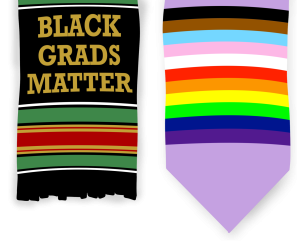
In a stunning display of tapestries, wood panels, paintings and mosaic work, Islamic culture is brought to life in an exhibit at the San Antonio Museum of Art.
“The Jameel Prize: Art Inspired by the Islamic Tradition” exhibit features work from 10 artists, all of whom have been selected as finalists for the coveted Jameel prize. In 2011, 10 individuals were chosen out of 200 submissions for the prize, with first place going to Rachid Koraïchi for his piece “Les Maîtres Invisibles (The Invisible Monsters).”
The Jameel Prize, established in 2009 by the Victoria and Albert Museum, provokes the dialogue of current Islamic culture and the traditions that may have been forgotten. The pieces explore how Islamic culture is evolving from the perspective of those deeply affected by the changes in modern culture and their environment.
While some works challenge the view of current Islamic culture, others embrace ancient Islamic traditions such as mosaics and tapestries with text.
The exhibit has been displayed in galleries all over the world, including the Institut du Monde Arabe in Paris, Casa Árabe in Madrid and the Cantor Center for the Arts at Stanford University. Now, the San Antonio Museum of Art joins the list for a limited run until August.
In “Fashion Week,” artist Soody Sharifi explores the preferred garment for Islamic women called the hijab and shows how Islamic culture has shaped the meaning behind the traditional style of dress. Hijabs are long garments assigned to women when they mature. The veil acts as a shield from non-related males when women are in public. In Islamic culture, the hijab is seen as a form of modesty, morality and protection.
Sharifi uses the technique of digital collage to create the scene of a faux fashion show. Her subjects, all female, ascend a stairway meant to resemble a catwalk. While male photographers snap shots of the models, figures that appear to be from ancient biblical texts are present in the audience.
Sharifi also brings attention to the way the hijab is currently worn in Islamic culture. There are emerging trends that have changed how the hijab can be wrapped and styled with a selection of different colors, patterns and fabrics. In modern culture, the hijab now stands as a traditional symbol for women and as a fashion garment. Online tutorials show how to style the hijab as well as demonstrate how to apply make-up
While Sharifi shows the development of culture through fashion, other pieces such as “Birds of Paradise” by Monir Shahroudy Farmanfarmaiah show the traditional style of mosaic work. The piece is made of reflective mirrors placed in an ornate arrangement that create the illusion of intricate floral patterns and movement.
The mosaic appears to use organic elements of leaves and vines intertwining, while combining the technique of reverse glass painting to make the effect of a matte finish.
Mosaic work is closely related to churches and mosques built in ancient Islamic times. Often, mosaics would be placed on the outside of religious buildings to create the feeling of an unworldly structure. This idea was intended to mimic the type of devotion associated with religion.
Koraïchi’s piece titled “Les Maîtres Invisibles (The Invisible Monsters)” takes a traditional approach to culture with hanging tapestries with Sufi calligraphy. The tapestries are simplistic with Sufi calligraphy painted onto the fabric. In ancient times, tapestries were often used for writing biblical stories and texts. The piece stands as a testament to how traditional art has been preserved and treasured in Islamic culture.
“The Jameel Prize: Art Inspired by the Islamic Tradition” will be on display at the San Antonio Museum of Art until August 11. For more information, visit samuseum.org.










